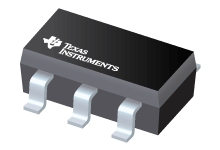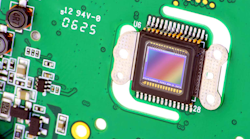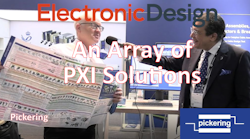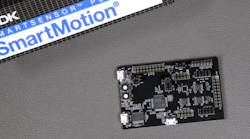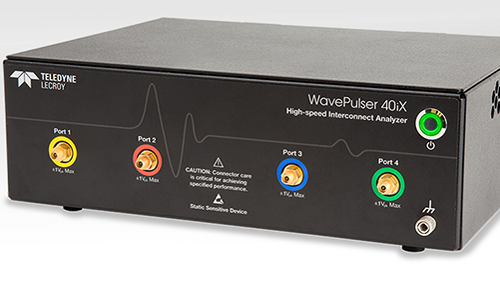Although LEDs tend to hog the spotlight, every now and again we hear of some inch-forward advances in the world of active-matrix organic light-emitting diodes (AMOLEDs).
Researchers from the Flexible Display Center (FDC) at Arizona State University working with Universal Display Corp. say they have successfully assembled the first full-color, flexible AMOLED display prototypes combining the FDC’s bond/de-bond manufacturing process and Universal Display’s full-color, top-emission phosphorescent organic light-emitting diode (OLED) technology and materials (Fig. 1).
To seal the flexible display prototypes from dirt, dust, liquids, and other contaminants, they employ proprietary single-layer encapsulation technology, also from Universal Display Corp. Final display assembly entails the use of materials and technologies developed by several other FDC industrial consortium members.
The Specs
The FDC prototype is a 4.1-in. (3.8-in. diagonal viewing area) OLED display on a PEN substrate with QVGA resolution (Fig. 2). It sports a 320 by 240 red/green/blue (RGB) format at 92 dpi using a 2T1C pixel circuit and low-temperature amorphous-silicon (a-Si) technology. Materials consist of Universal Display’s phosphorescent red, green, and blue OLED materials, which the researchers say have a proven track record in terms of significantly reducing power consumption in glass-based AMOLED components.
With a 5-mil DTF HS-PEN substrate, the displays also integrate an active-matrix array of thin-film transistors fabricated on DuPont Teijin Films Teonex film using substrate handling and processing technologies developed at the FDC. The researchers have also produced versions using transistors made with both low-temperature a-Si and higher-performance indium gallium zinc oxide.
The prototype delivers a luminance of 200 cd/m2. Its white color temperature is D6500, and its RGB figures are R (0.463, 0.529), G (0.105, 0.576), and B (0.088, 0.397).
Function
Primary funding for the FDC comes from the U.S. Army for the purpose of developing lightweight, bendable, and unbreakable OLED displays capable of displaying full-color/motion video. These displays would have to endure the daily flirts with devastation common to military apps.
A key factor in keeping these flexible displays in working order under tough battlefield conditions is Universal Display’s single-layer encapsulation technology. An encapsulation layer provides a protective barrier that isolates the display from environmental conditions. Importantly, this barrier uses environmentally benign and non-toxic materials within a potentially low-cost process.
“Demonstrating the first flexible color phosphorescent AMOLED display that integrates Universal Display’s encapsulation technology with the FDC’s bond/de-bond manufacturing process represents a tremendous step forward in the advancement of flexible OLED displays,” says Mike Hack, vice president of Universal Display and an FDC Board of Governors member. “In addition to working toward the targets set by the U.S. Department of Defense, flexible OLEDs have the potential to open up a vast array of product opportunities in the commercial and consumer sectors in the foreseeable future.”
Bottom Line
Compared to existing video display technologies, a big plus for field apps is the lower power consumption of Universal Display’s phosphorescent OLEDs. Although exact power-consumption figures are not readily available or forthcoming, if power savings are significant, the future for flexible AMOLED displays looks pretty bright in the consumer and commercial markets as well.
Flexible Display Center
http://fexdisplay.asu.edu
Universal Display
www.universaldisplay.com





